UV Curing Chamber for Resin Prints
by JackvMakes in Workshop > 3D Printing
9043 Views, 17 Favorites, 0 Comments
UV Curing Chamber for Resin Prints
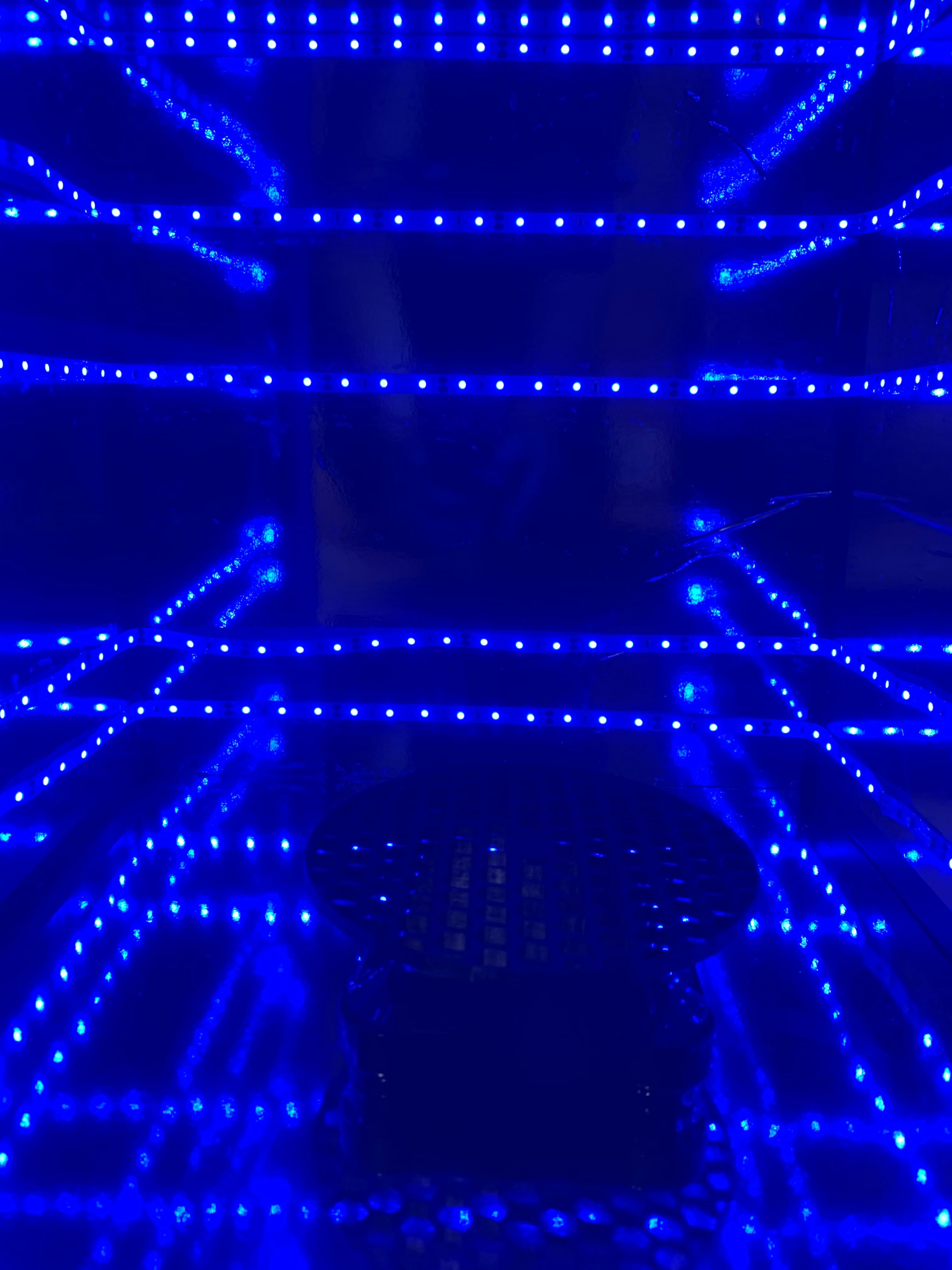
I've recently started to consider stepping into the world of resin 3D printing. I did as much reading on the subject as I could and looked for everything I would possibly need in order to do so properly. This means having the right tools, being safe, and keeping the environment clean. I looked around at my options and although there were a few options for UV curing chambers, there was nothing out there pre-made that didn't cost an arm and a leg, and a lot of the other DIY solutions were too small or not all contained in one box. I saw videos where people used outlet timers, bread boxes, 3D printed boxes, etc. I wanted to build a self contained box that did contained everything you would need and make it look pretty. I also wanted to make it easy enough that I didn't have to work on programing an arduino and simple enough that if I wanted to scale it up, I could do so without much hassle. I planned on using the box as an all purpose curing box to help safely clean and dispose of anything that touches resin. Think of it like an incinerator, it'll cure all my tools, paper towels, trash, nitrile gloves, etc. The tools will be washed in my ultrasonic cleaner after curing and the trash will be tossed since the resin will now cured and hopefully not cause issues to our environment.
I began planning and drawing different diagrams of what I wanted it to look like, what kind of equipment I would need and began searching online for more ideas. Eventually I landed on using the IKEA Eket box, which was a good size, not too big and not too small. Most items I bought from Amazon with the exception of the box. I'll include affiliate links below to all items. The box was about 35cm x 35cm x 35cm. The timer was a bit of a puzzle. I had no idea what I was looking for, but I eventually landed on a unit that I felt would possibly work. The mirror vinyl wrapping was an idea I got from another person who built a chamber, and the UV LEDs seem to be what a lot of people were using. They had the right wavelength and weren't terribly expensive. The solar powered turntable was also another item that seems to be readily used by others, I did decide to print a larger platter for it after realizing how small it was. I also added a simple SPST switch so I could simply turn it on and off when needed.
Disclaimer: I am not responsible for any damage done if you do not use proper protective measures when using resin or working with UV lights and/or any tools.
Anyway, the next section contains all the equipment needed for this project. Enjoy and feel free to ask any questions!
Supplies
I've provided a list of equipment and supplies needed for building the UV curing chamber. The equipment listed are what I used, and the supplies are the ones that I bought. If you already have most of the supplies or choose to order them from Aliexpress, the overall cost will be cheaper, but the UV curing chamber should only cost somewhere between $90-$110.
Equipment needed:
Soldering iron Amazon
pliers Amazon
scissors Amazon
razor blade Amazon
precision flat head screwdriver Amazon
Supplies needed:
3D models: Thingiverse
IKEA EKET Cabinet with door IKEA
SPST Switch Amazon
LCD Digital timer relay Amazon
Lever nuts Amazon
2x 12"x78" roll of mirror vinyl Amazon
16.4' 20AWG silicone wire Amazon
16.4' UV LED strip with power Amazon
2 Pin LED strip connectors Amazon
Solar powered turntable Amazon
Assembling the Ikea Eket Box
The reason for the mirro vinyl wrap on the inside of the box is to help reflect the UV lights on all sides, this will help in the curing process by allowing light to help the model everywhere.
When assembling the Eket box, you want to first apply the mirror vinyl wrap on the insides of each piece. This is so that you don't have to worry about trying to do it once the box is assembled. The vinyl wrap is a bit finicky so I found it easier to do it this way, you can assemble the box and then wrap the inside as well if you wanted.
I measured the inside of each side and cut the piece of vinyl wrap so it would cover the entire side, applying the vinyl wrap is not easy but if you do so slowly and making sure you push out all the air bubbles with a credit card, you'll get a nice smooth surface. Once the vinyl has been applied and you're happy with the way it looks, peel off the plastic layer that sits on top of the vinyl wrap. Do this for each of the 4 sides and the inside of the door.
Once you've wrapped all the sides, put the box together following the provided instructions. It's fairly easy to assemble since there aren't a lot of tools needed other than a screw driver.
Now you have a fully assembled box that is reflective on all sides.
Put the vinyl wrap aside, since we'll use it again later.
LED Strips and the Box
.jpg)
The UV LED roll that I linked is about 16.4', you'll want 4 strips, each is about 3.5'. They may seem a bit long, but you can always trim them. At this step you can either use the LED 2 pin connectors I linked from Amazon or solder the strips together. The easy route is to use the connectors if you don't want to solder, but I've found that they are a bit bulky and if I redid my box I would solder the strips instead. Be sure to wear eye protection and not look directly into the UV LEDs, they can cause damage.
If you are using the connectors, you'll notice that the wires are way too short for what we need. You can actually open up the connectors and use longer wires using a precision screwdriver. The wires are about 20AWG, and for my box I replaced the wires with ones that were about 5" or so. Make sure to use pliers to press and secure the wires in the connectors or they may not work. Once all the LED strips have been either soldered or connected with the connectors, do a test to see if they work. If all the strips turn on, you're good to go.
If you are soldering the strips, you would essentially solder the positive from one side to the other and do the same for the negative. The idea is that you want to be able to put the wires like the diagram I've attached, just try to imagine it in 3 dm. The two wires going to the box that holds the timer and electronics should be kept at a good length, I'd say maybe 8".
Attaching the LED Strips Inside the EKET Box
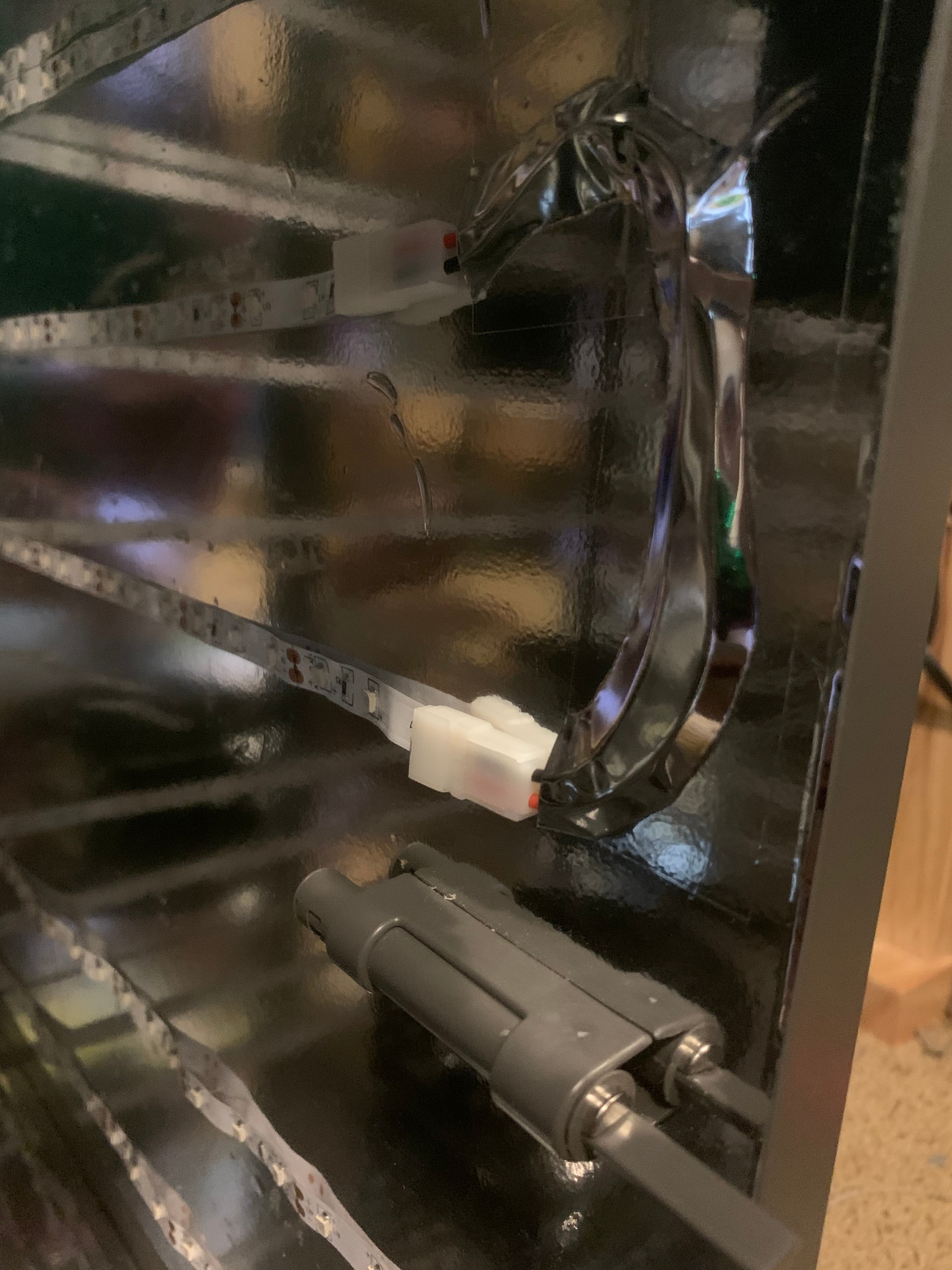
For this step, you want to make sure that you are evenly spacing the LEDs, if you don't you'll have to peel the LEDs off and stick them on again. It's not fun, trust me.
Start sticking your UV LEDs from the side with the wires that will connect to the timer. Start from the top on the left hand side. Slowly peel and stick the LEDs to the sides, making sure that the strips are as close to the top of the side as possible. This step isn't too hard, but it is tedious if you want your LED strips to be straight and even spaced out.
Once all the LEDs have been placed correctly, you will want to cut strips of the mirror vinyl wrap; just enough to cover the wires. This is to hide the wires and make the box look more seamless. This isn't necessary, but I found that it helped to make the box look cleaner and keep the cables in order.
Wiring the Timer Relay

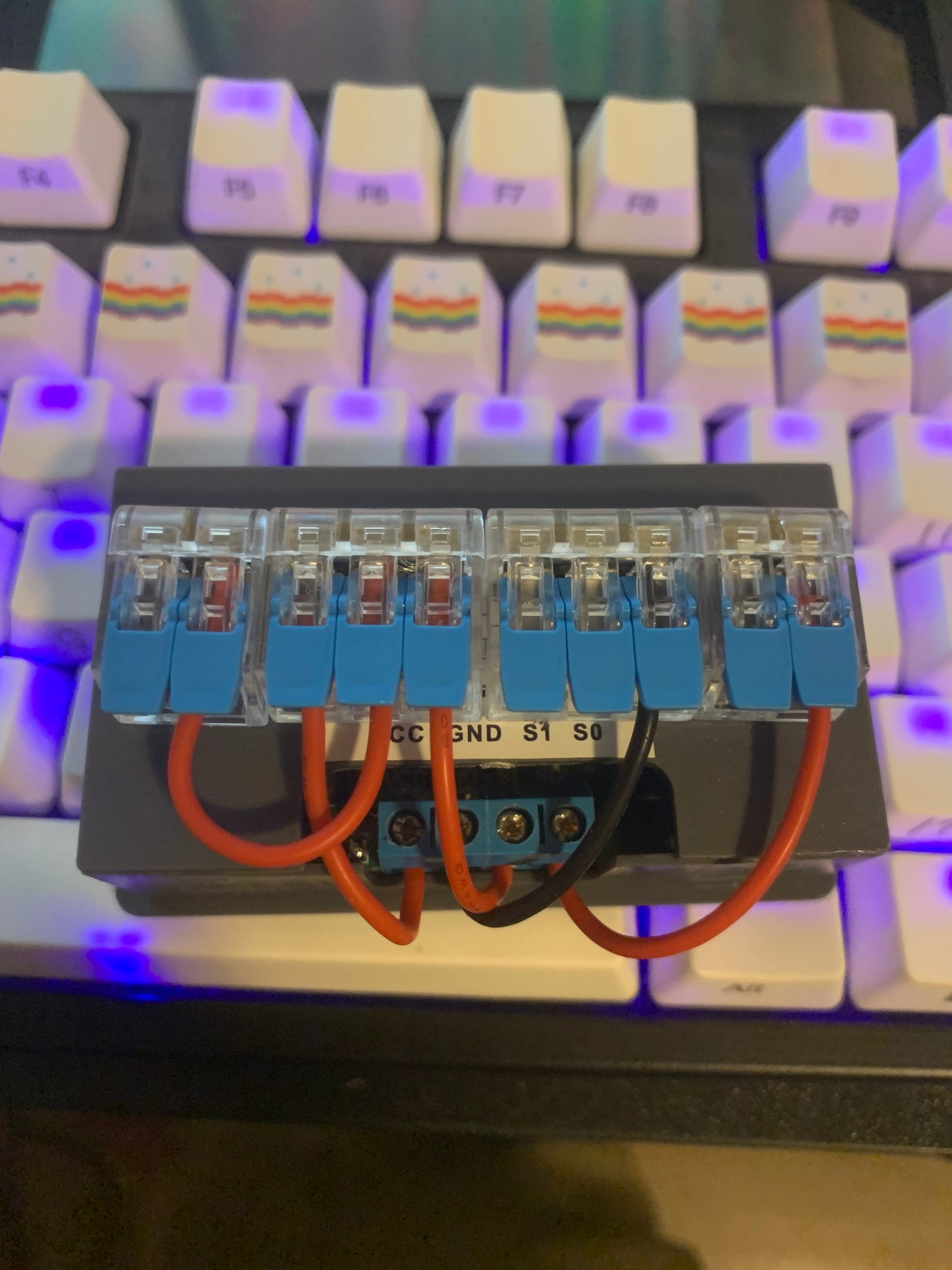
The timer relay can be wired in a few ways. I've attached a diagram of how I wired it. I also used lever nuts to keep everything the cable management clean. You don't have to use lever nuts, but I found that it made it easy for me to swap out wires if I accidentally had wires that were either too short or too long without much hassle. You can easily just solder all the wires as well if you don't want to use lever nuts.
The diagram I attached shows the use of an SPST switch to turn the timer on and off, there isn't much to do and is a fairly simple setup if you just attach the wires as shown.
Programming the timer can be challenging. There are a lot of settings to choose from. The timer can do seconds, minutes, or hours. One thing I dislike about it is that you can only do either seconds, minutes, or hours, not a combination of both. For our use case, we want to have the settings set to P0--1 and P1--1. Which means the timer will be on for X amount of minutes and then shut off. Below are other settings you can use and steps on how to set the programming:
(1) Long-press the SET button, you will enter the parameter setting menu. You can set P0,P1 mode. You can switch P0,P1 mode via short-press SET button.You can set the timing mode via up/down button in P0 mode. You can set the working mode via up/down button in P1 mode.
P0--0: T1 timing time mode is second
P0--1: T1 timing time mode is minute
P0--2: T1 timing time mode is hour
P1--0: After T1 time, the load will start working (T1 timing)
P1--1: After T1 time, the load will stop working (T1 timing)
P1--2: After T1 time, the load will start working (T1 timing), and after T2 time, the load will stop working (T2 timing), end.
P1--3: After T1 time, the load stop working (T1 timing), and after T2 time,the load will start working (T2 timing) , end.
P1--4: After T1 time,the load will start working (T1 timing), and after T2 time ,the load will stop working (T2 timing), cycle.
P1--5: After T1 time, the load will stop working(T1 timing), and after T2 time,the load will start working (T2 timing), cycle.
For example, someone wants a Load power on for 10 seconds, shut down for 20 seconds, and keep cycling. The setting method is as follows: T1 set time 10, T2 set time 20 P0—0 (T1 timing range is seconds) P1—4 (Timer working mode is to work first and then stop to cycle)
Putting Everything in the Enclosure

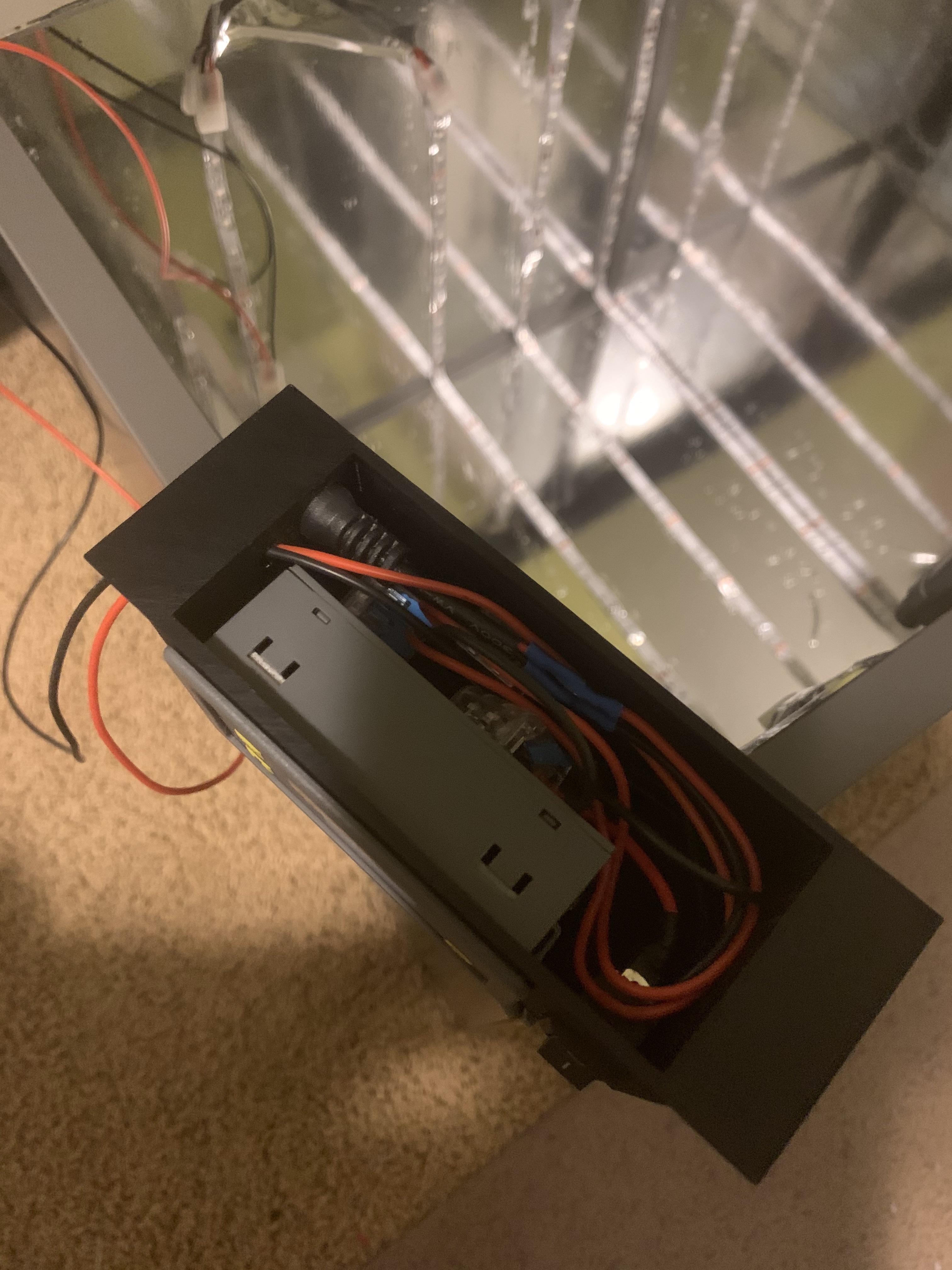
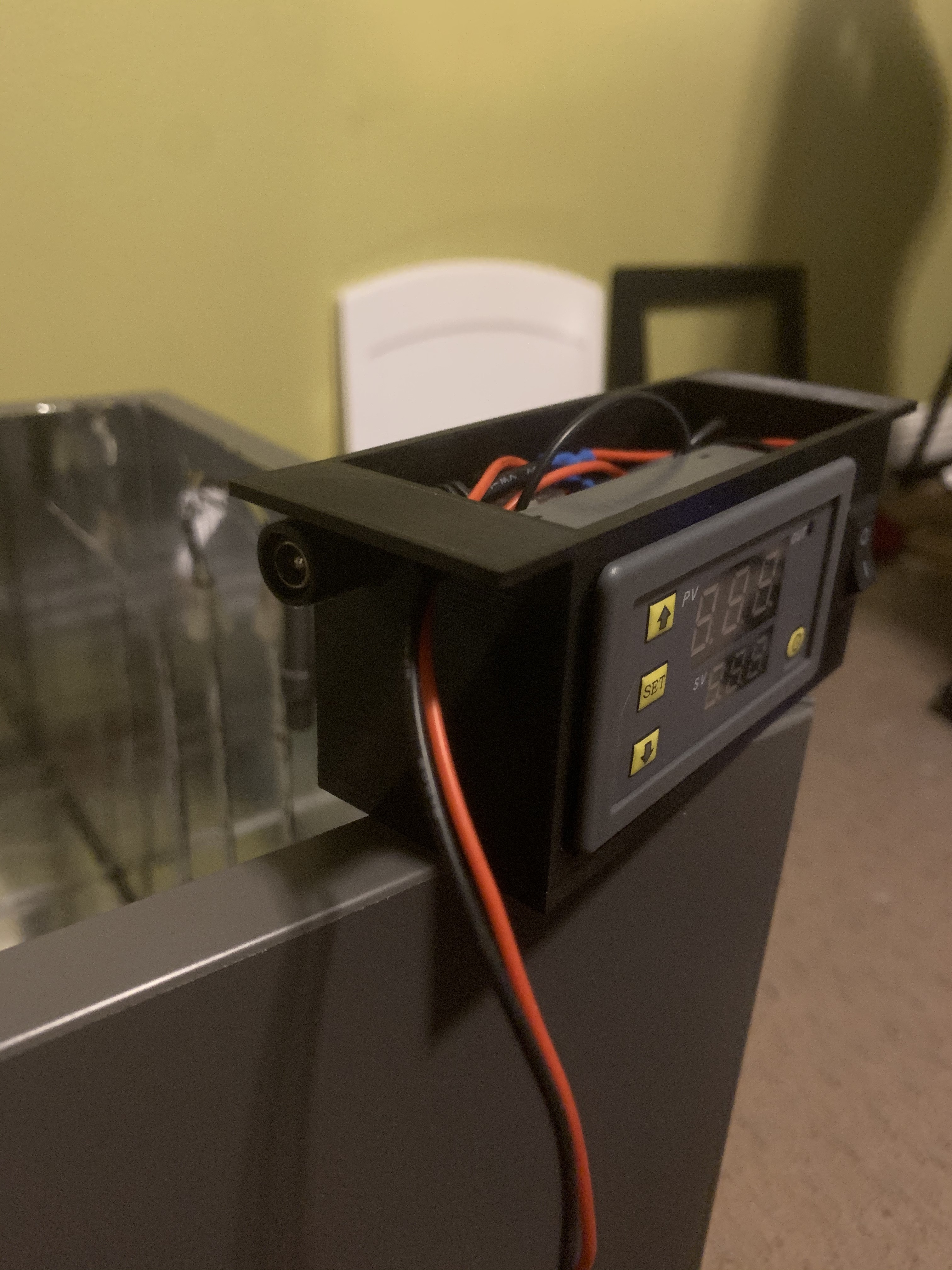
For the enclosure, you need to either have an FDM printer or resin printer. This will hold all the electronics that are needed. There are two holes on the left side, the bigger one is for the power cable plug, and the smaller one is for the LED wires. If you use FDM, please make sure you print the box out of ASA or some sort of UV resistant filament. Over time the enclosure may break down from the UV.
Wire everything up, and power on the timer by flipping the spst switch and verify that everything works. If the LEDs turn on and the timer works, you're basically done and now have a working UV curing chamber for all your resin prints!
The next time to do is to drill a hole in the back of the box on the left hand side. You'll want a hole that is about 10mm in diameter to run the power cable into the box in order to plug it into the power port. The power cable provided is pretty short, so you'll need to find a power brick with a longer cable or modify the cable and make it long enough to reach the power port inside the box.
Side Note:
If I redid this project, I would actually do this differently. Instead of running the power cable inside the box and having the plug in the enclosure, I would make make sure the wire for the plug was long enough that it would go out the back of the box. that way it would look more cleaner.
After everything is assembled and the you've verified that everything works, just stick the enclosure to the top of the inside of the box. Make sure it's far enough away that you can close the door. I used 3M command strips, but any double sided tape will work. You can even screw it in place if you'd like.
UV Chamber Is Completed!

So the final thing to do to print the turntable platter if you'd like a bigger platter than the one that can with the solar powered turntable. Place that in the middle of the box and you're done. You've created a UV curing chamber that is big enough to cure most things.